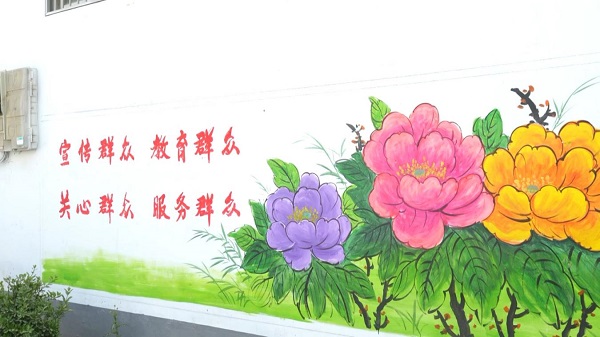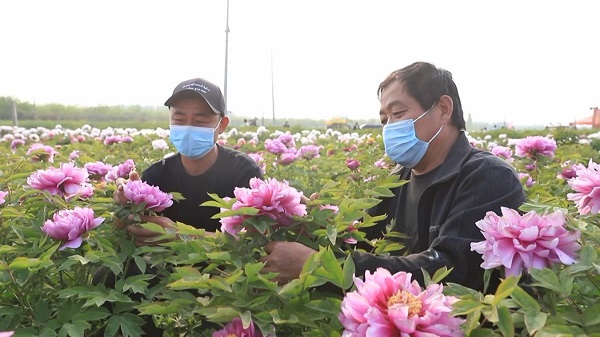Shandong's county forms three engines for promoting rural vitalization
Huangzhuang village in Caoxian county, East China's Shandong province, has forged a unique development path characterized by "transfusion", "hemopoiesis", and "cultivation", to build a harmonious and beautiful community.
"Transfusion" refers to the attraction of external resources. Huangzhaung village has utilized allocated funds and grants to refurbish five roads, totaling 2,090 meters, install 180 street lamps, repair two drainage wells, construct 2,720 meters of water pipes, introduce 2,000 kilograms of quality seeds, create four propaganda murals, and plant over 200 trees for greenery.

One wall in Huangzhuang village is adorned with beautiful patterns. [Photo provided to chinadaily.com.cn]
"Hemopoiesis" involves establishing the village's own industries. Huangzhuang village maximizes its local advantages by developing three key sectors: peony cultivation, watermelon production, and hanfu and woodware processing.
The village has introduced distinctive peony varieties, cultivating the brand identity of "Huangzhuang Peony" for sustained growth.
Enhancing watermelon varieties, the village has focused on scaling cultivation and innovating sales strategies. Known for their quality and sweet flavor, Huangzhuang's watermelons are popular among consumers.
Promoting its hanfu and woodware processing industries, the village now operates two wood processing factories and five hanfu workshops, effectively leveraging local resources.

Villagers cultivate the peonies in the planting garden. [Photo provided to chinadaily.com.cn]
"Cultivation" focuses on attracting talent, a crucial factor in promoting rural vitalization. Huangzhuang village actively engages university graduates by providing personalized mentorship from local technical specialists. These efforts empower village development significantly. (Edited by Zhang Ying)








